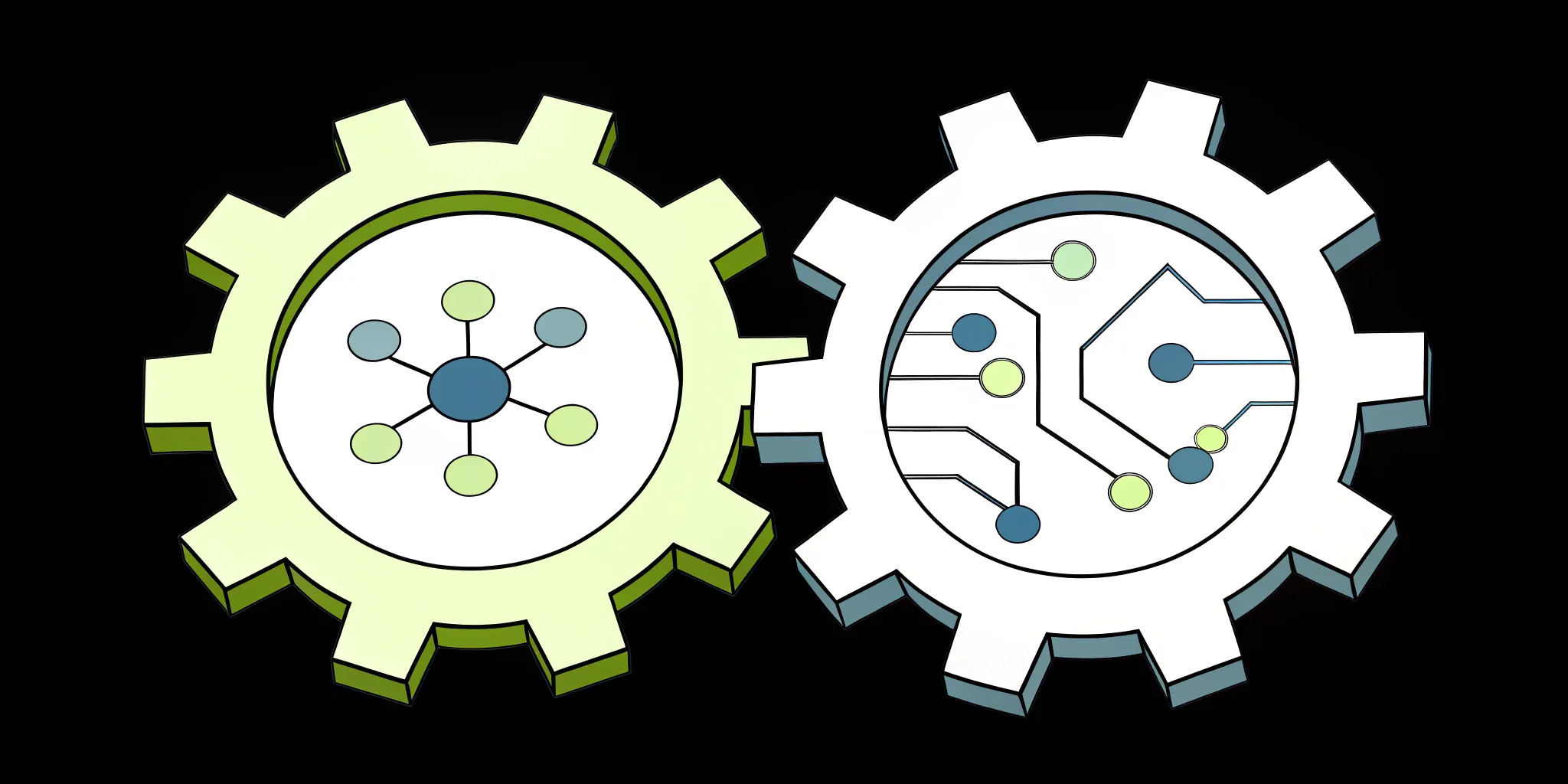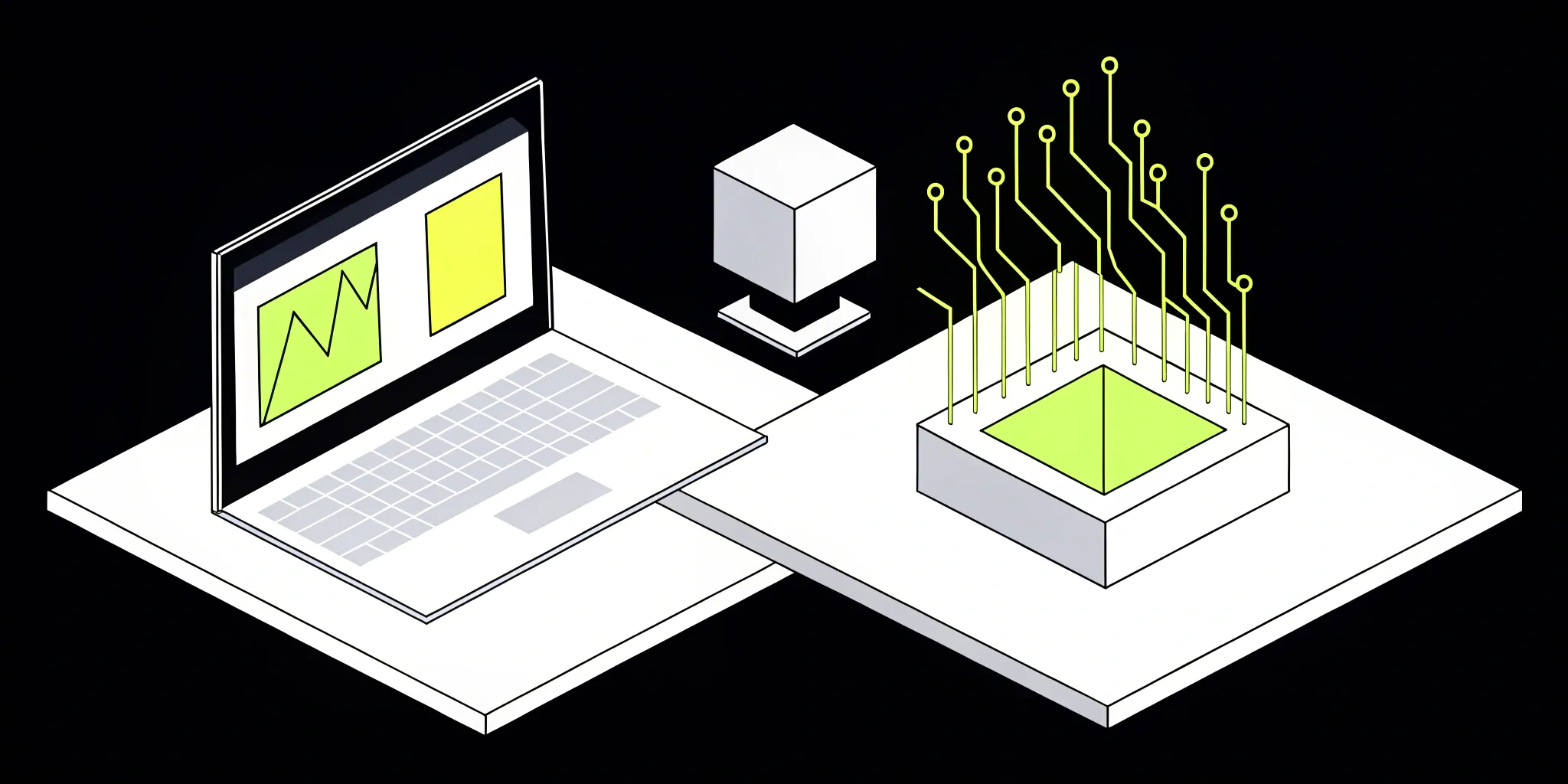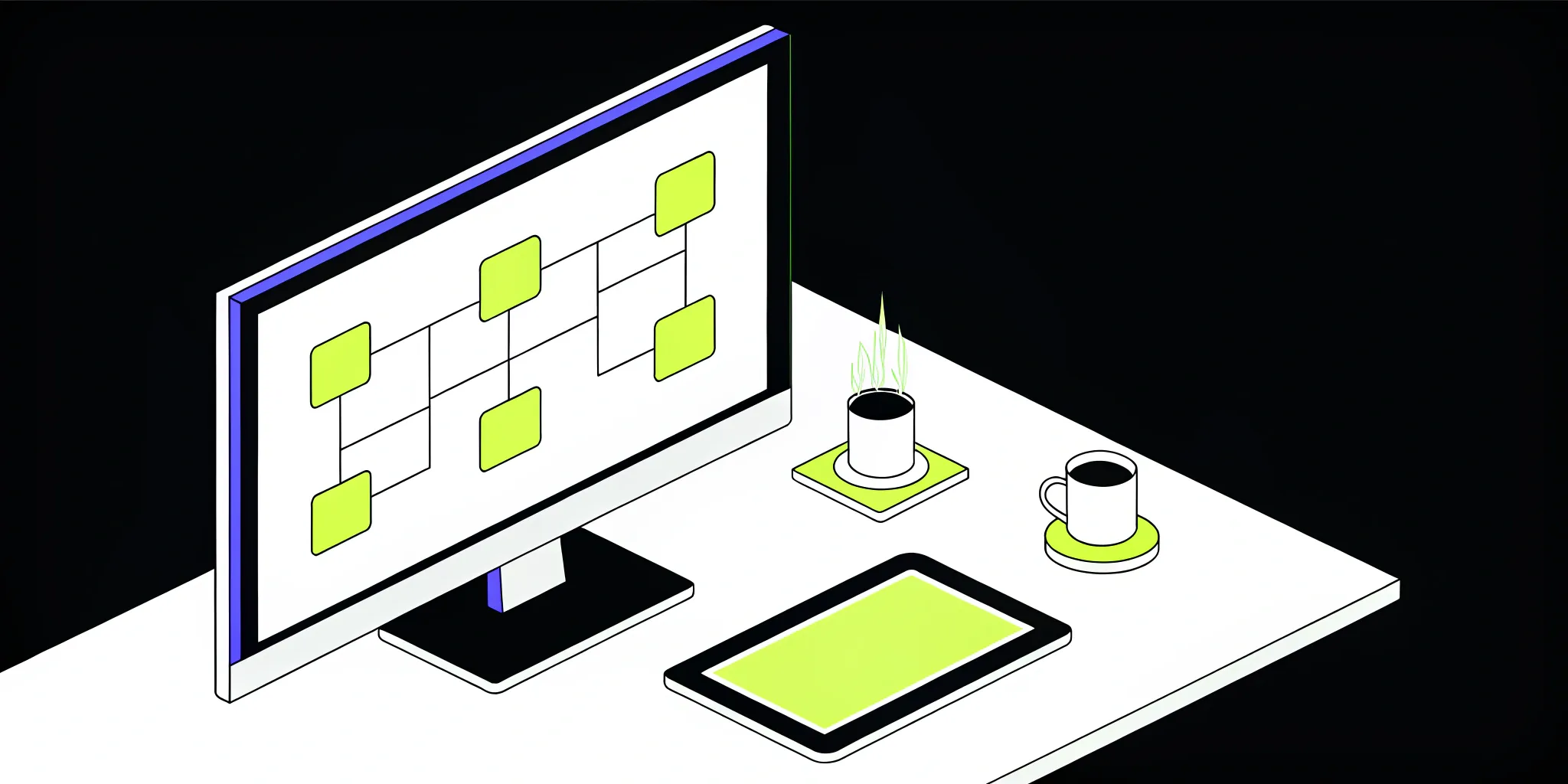Data Extraction vs. Ingestion: How They Work Together

Your business data is scattered everywhere. It’s in customer databases, marketing platforms, support tickets, and third-party applications. To make any sense of it, you first need to collect it. This is where many teams get stuck, confusing two key processes: data extraction and data ingestion. Extraction is your specialist, sent on a mission to retrieve specific information. Ingestion is your logistics manager, responsible for bringing all that retrieved data home to a central, organized location. This guide will clarify the data extraction vs ingestion discussion, showing you how both are essential for breaking down data silos and creating a single source of truth for your entire organization.
Key takeaways
- Extraction Pulls, Ingestion Moves: Extraction is the targeted act of retrieving specific information from a source. Ingestion is the broader process of moving that data into a central system, like a data warehouse, making it available for analysis.
- They Are Partners, Not Competitors: You need both processes to build a functional data pipeline. Extraction breaks down information silos by getting the data out, and ingestion creates a single source of truth by bringing it all together in one place.
- Optimize Your Workflow for AI Success: An effective data pipeline relies on more than just tools. Prioritize data quality from the start, automate the flow between extraction and ingestion, and build a scalable system that can grow with your business needs.
What is data extraction?
Think of data extraction as the first, essential step in making sense of the digital world. It’s the process of pulling raw information from all the different places it lives. Your business generates and has access to a massive amount of data, but it's often scattered across different systems and formats—some neat and tidy, others a complete mess. Extraction is how you gather it all up so you can start to find the valuable insights hidden inside.
Before you can run any analysis, train an AI model, or create a business intelligence report, you need the raw materials. Data extraction tools go out and retrieve this information from sources like databases, websites, documents, and applications. The global data extraction market is growing rapidly because businesses understand that you can't build a data-driven strategy without a solid way to collect your data first. It’s the foundation for everything that follows, from simple analytics to complex machine learning projects. Without a reliable extraction process, your data remains siloed and untapped, limiting its potential to help you grow.
The core parts of data extraction
At its heart, data extraction is about retrieving relevant data from two main kinds of sources: structured and unstructured. Structured data is the organized, predictable information you’d find in a spreadsheet or a database—think customer order histories or inventory levels. It has a defined format, which makes it relatively straightforward to pull.
Unstructured data, on the other hand, is everything else. It’s the free-flowing text in customer support emails, the content of PDF reports, social media comments, or even images and videos. This type of data doesn't have a predefined model, making it more challenging to extract. The core job of an extraction process is to pull information from both types of sources and get it ready for the next stage.
How businesses use data extraction
Businesses use data extraction to get a complete picture of their operations and customers. By pulling information from various systems, they can stop relying on incomplete data and start making more informed decisions. For example, companies extract many types of data, including customer details from their CRM, sales figures from their ecommerce platform, and marketing performance metrics from advertising accounts.
This process is crucial for everything from tracking financial health to understanding customer behavior. It helps reduce the manual effort of copying and pasting information, which saves time and minimizes errors. More importantly, it allows you to identify trends, monitor key performance indicators in real time, and gain the insights needed to stay competitive. Ultimately, extraction powers the analytics that help you answer your most important business questions.
What is data ingestion?
Think of data ingestion as the process of welcoming new information into your system. It’s how you acquire, check, and import data from all kinds of places so you can either use it right away or store it for later. If data extraction is like picking apples from a tree, data ingestion is the conveyor belt that moves those apples into the factory for processing.
For any AI initiative to succeed, it needs a steady, reliable supply of data. Data ingestion is the first and most critical step in that supply chain. It’s about collecting raw data from its original sources—like your company’s app, website analytics, or customer databases—and moving it to a central location where it can be organized and prepared for your AI models. This process ensures your systems have the fresh, relevant information they need to generate accurate insights and power smart features. A well-managed data ingestion pipeline is the foundation of a strong data strategy.
How the data ingestion process works
At its core, the data ingestion process has two main components: a source and a destination. The source is simply where your data comes from. This could be anything from a customer relationship management (CRM) platform and social media feeds to Internet of Things (IoT) sensors on a factory floor. The destination is where you send all that collected data to be stored, like a data warehouse or a data lake.
The goal is to create a reliable pathway for information to travel from point A to point B. This involves setting up a system that can pull data from your chosen sources and efficiently load it into your destination. The process also includes initial validation steps to check for errors or inconsistencies, ensuring the data is usable before it even enters your primary storage.
Common types of data ingestion
Data doesn’t always arrive at the same speed, so there are different ways to ingest it. The two most common types are batch and streaming ingestion. Batch ingestion involves collecting data over a period of time and then moving it all at once in large groups, or "batches." This is great for processes that don't need up-to-the-second information, like generating weekly sales reports or updating a customer database overnight.
On the other hand, streaming ingestion moves data in real-time, as soon as it’s created. This method is essential when you need immediate access to information. Think of fraud detection systems that analyze transactions as they happen or applications that track live website traffic. Choosing between batch and streaming depends entirely on how quickly your business needs to act on its data.
Data extraction vs. ingestion: what's the difference?
At first glance, "data extraction" and "data ingestion" might sound like two ways of saying the same thing. While they are closely related steps in your data workflow, they have distinct roles, methods, and outcomes. Getting clear on the difference is the first step toward building a data foundation that can truly power your AI initiatives. Let's break down what sets them apart.
Different goals and scopes
Think of data extraction as a targeted mission. Its main goal is to retrieve specific pieces of information from a source. For example, you might extract customer names and email addresses from your CRM or pull product prices from a competitor's website. It’s focused and precise. In contrast, data ingestion has a much broader scope. It’s the process of importing that extracted data (and data from other sources) into a destination system, like a data warehouse. Ingestion is about bringing everything together in one place so it’s ready for large-scale use.
Contrasting methods and techniques
The "how" behind each process also differs. Data extraction uses techniques designed to pull information from various, often unstructured, places. Common methods include using APIs to connect to software, web scraping to gather data from websites, or optical character recognition (OCR) to digitize text from scanned documents. Data ingestion, on the other hand, is about how data is moved into your system. This typically happens in one of two ways: batch ingestion, where data is collected and moved in scheduled groups, or streaming ingestion, where data flows into your system in real-time as it’s created.
The outcome of data extraction is simply the raw data you targeted, pulled from its source and ready for the next step.
The final outcome of each process
Ultimately, each process delivers a different result. The outcome of data extraction is simply the raw data you targeted, pulled from its source and ready for the next step. It saves you from manual copy-and-paste work. The outcome of data ingestion is much bigger: a centralized and organized data repository. This process ensures your data is clean, consistent, and ready to fuel advanced analytics and machine learning models. It creates a single source of truth that your entire organization can rely on for making smarter, data-driven decisions.
The right tools for extraction and ingestion
Once you understand the roles of extraction and ingestion, the next step is picking the right tools for the job. Your choice will depend on your data sources, the volume of data you’re handling, and your ultimate goals. Having the right technology in place is fundamental to building a data pipeline that can support powerful AI applications. Let's look at some of the go-to options for each process.
Top tools for data extraction
Data extraction tools are your specialists for pulling information from specific places. Think of them as expert retrievers, each designed for a particular type of source. For example, if you need data from websites, you’ll use web scraping tools. To get data from software platforms like a CRM, you’ll rely on API integrations. For pulling text from scanned documents or images, OCR technology is the answer. The key is to match the tool to the data source. You wouldn't use a hammer to turn a screw, and you wouldn't use an OCR tool to query a database. Choosing correctly ensures you get the exact data you need, cleanly and efficiently.
Popular technologies for data ingestion
After you've extracted your data, ingestion technologies take over to move it into a storage system like a data lake or warehouse. These tools are built to handle the flow of data, which can happen in scheduled batches or as a continuous, real-time stream. Popular open-source options include Apache Kafka, which is excellent for managing real-time data streams from sources like IoT devices or website activity logs. Cloud providers also offer powerful solutions, such as AWS Glue and Google Dataflow, which are designed to build and manage data pipelines at scale. These technologies ensure that data from all your different sources arrives reliably where it needs to go.
How their features differ
The biggest difference between extraction and ingestion tools lies in their focus. Extraction is targeted and precise—it’s all about retrieving specific information. Ingestion is broader; its job is to collect data from multiple streams and prepare it for storage and analysis. This is why the ingestion process often includes initial data cleaning and formatting steps. It’s the first stage of a larger workflow often called ETL (extract, transform, load), where data is not just moved but also reshaped into a usable format. An ingestion tool makes sure the raw data gets through the door, while the transformation stage gets it ready for its final destination.
Benefits and challenges of each
When you're building a data pipeline, it’s helpful to think of extraction and ingestion as two different tools for two different jobs. Neither is inherently better; they simply serve different purposes and come with their own unique advantages and potential headaches. For any AI initiative to succeed, it needs a solid data foundation. The choices you make about extraction and ingestion directly impact the quality of your data and, ultimately, the performance of your models. Understanding these nuances is the first step toward designing a workflow that’s both efficient and resilient for your specific goals.
Data extraction is your specialist tool. It’s precise and targeted, perfect for when you know exactly what you need. Think of it as performing careful surgery on your data sources. The challenge lies in the setup and maintenance required to keep that precision sharp. Data ingestion, on the other hand, is your all-purpose workhorse. It’s built to bring everything into one place, creating a comprehensive resource for broad analysis. The main hurdle here is managing the sheer volume and variety of data without sacrificing quality or speed. Let's break down what this means for your team in practice and how you can get the best of both worlds.
The upside of data extraction
The biggest advantage of data extraction is its precision. Instead of pulling in entire databases, you’re carefully selecting only the specific pieces of information you need for a particular task. This targeted approach is incredibly efficient, reducing the amount of data you have to store and process. It allows your team to get straight to the point, quickly identifying trends or answering specific business questions without wading through irrelevant information. This gives you more control and agility, making it easier to share specific datasets with different teams or plug them into specialized analytical tools. When you need clear answers to focused questions, extraction is often the most direct path.
Solve common extraction hurdles
While targeted, data extraction isn't without its challenges. The main hurdles are maintaining data integrity, managing security for sensitive information, and handling the sheer scale of large datasets. The key to overcoming these issues is to use the right tools and establish a clear strategy from the start. Modern data extraction tools often include features for data validation and transformation, helping ensure the information you pull is accurate and consistent. By clearly defining what data you need and why, you can create more secure, manageable workflows that are less prone to errors. A little planning up front goes a long way in preventing major headaches down the road.
Key benefits of data ingestion
The primary benefit of data ingestion is creating a single, centralized source of truth for your organization. Instead of analysts pulling data from dozens of different systems, ingestion brings it all into one place, like a data warehouse or a data lake. This process often includes cleaning and standardizing the data, so it arrives ready for analysis. Having centralized data access not only saves time but also ensures everyone is working from the same playbook. It also opens the door for powerful automation, allowing you to process continuous streams of real-time data, which is essential for feeding machine learning models and powering dynamic dashboards.
The most common challenges with data ingestion are ensuring consistent data quality, managing latency, and integrating with a wide variety of systems.
Address common ingestion challenges
Bringing in data from multiple sources can get complicated. The most common challenges with data ingestion are ensuring consistent data quality, managing latency, and integrating with a wide variety of systems. A high-volume data stream is useless if the data is corrupt or arrives too late to be relevant. The solution is to build a resilient pipeline with robust quality checks and monitoring. It's also a best practice to create a separate, optimized environment for analysis. This approach allows for scaling your analytical efforts without putting a strain on your original operational systems, giving your team the freedom to explore the data without risking performance issues.
How to optimize your data processes
Once you understand the roles of data extraction and ingestion, the next step is to make them work efficiently for you. Optimizing your data processes isn't just about picking a tool; it's about building a smart, streamlined workflow that supports your AI goals from start to finish. A solid strategy ensures your data is not only accessible but also clean, reliable, and ready for analysis. By focusing on data quality, automation, and scalability, you can create a powerful data pipeline that fuels your projects and grows with your business. Let's walk through how to fine-tune your approach.
1. Ensure high-quality data
Your AI models are only as good as the data you feed them. To get reliable results, you need to prioritize data quality from the very beginning. While data extraction is often targeted, data ingestion tends to be broader, pulling in large volumes of raw information from various sources. This is why the ingestion phase is so critical for cleaning and preparation. Before you even begin, establish clear standards for what "good" data looks like for your project. By setting up validation rules and cleaning protocols ahead of time, you can systematically filter out inaccuracies and ensure your AI has a strong foundation to learn from.
2. Implement smart automation
Manually managing data is time-consuming and prone to error. Smart automation is your key to building an efficient and reliable data pipeline. The goal is to create an integrated system where extraction and ingestion work together seamlessly. This means setting up automated workflows that pull data from its source, clean and transform it, and load it into its destination without needing constant manual oversight. An integrated approach not only saves countless hours but also improves data security and consistency. Start small by automating a single, repetitive task, and you'll quickly see how much of a difference it makes in your daily operations.
3. Plan for scalability
Your data needs today won't be your data needs tomorrow. As your business grows, so will the volume and variety of your data. A process that works now might buckle under future demand, which is why you need to plan for scalability from day one. A well-designed data ingestion pipeline creates a single source of truth, breaking down data silos and making information accessible across your organization. As you design your workflow, think about its core components: the sources where data originates and the destinations where it will be stored. Choose a flexible architecture and tools that can handle increasing loads and new data sources, ensuring your data strategy can support your long-term vision.
How extraction and ingestion work together
It’s easy to frame these two processes as competitors, but it’s more accurate to think of them as partners. Data extraction and ingestion aren't mutually exclusive; they are two essential steps in the same data journey. You can’t have one without the other if your goal is to turn raw information into something truly useful for your business. Think of it as gathering raw materials and then bringing them to the factory floor. Extraction gathers the goods, and ingestion gets them into the system where the real work can begin.
They are interconnected processes that work in tandem to get your data ready for transformation and analysis. While the right approach depends on factors like your data volume and how frequently you need updates, you will always need a way to both get the data and move it. A modern data stack handles this entire flow, ensuring information gets from its source to your analysts and AI models efficiently.
Why you need both for data management
The main reason you need a solid extraction-ingestion pipeline is to create a single source of truth for your organization. Most companies have data scattered across dozens of applications and databases. This creates information silos that make it impossible to get a complete picture of the business. Extraction is the first step in breaking down those walls by pulling the data out.
But extracted data that just sits there doesn't solve the problem. That's where ingestion comes in. The ingestion process moves all that extracted data into one central repository. This is how you build a single source of truth that your entire team can rely on for reporting and analysis. An integrated approach that combines both steps is the most effective way to improve your data quality, keep it secure, and make your data operations more efficient.
Make better decisions with your data
Ultimately, the goal of managing data is to make better, faster business decisions. A seamless workflow between extraction and ingestion is what makes this possible. When data moves quickly from its source into your analytical environment, your teams get easier and faster access to the information they need.
This is especially important for any application that relies on timely information. For example, if you want to analyze website clickstream data to understand customer behavior or monitor sensor data from IoT devices, you need real-time insights to act on opportunities or issues as they happen. By combining extraction and ingestion into a smooth, automated pipeline, you empower your teams with the fresh, reliable data required to drive your business forward with confidence.
A look at real-time processing and data lakes
Once you have a handle on extraction and ingestion, you can start exploring more advanced data strategies. Two concepts that often come up are real-time processing and data lakes. Both rely on a solid data ingestion foundation to function, and they are essential for preparing your organization for sophisticated analytics and AI.
The role of real-time data ingestion
When your business needs answers right now, you can’t wait for data to be processed in batches. This is where real-time data ingestion comes in. It’s designed for speed, moving information from its source to your systems almost instantly. Think of applications that rely on immediate insights, like tracking a package in transit or monitoring factory equipment to prevent failures. For these time-sensitive tasks, Real-time analytics powered by instant ingestion ensures your data is always current, allowing you to make decisions based on what’s happening this very second. It’s a crucial capability for any organization that operates in a fast-moving environment.
Data ingestion and data lakes go hand in hand. A data lake is a central storage system that holds a massive amount of raw data in its native format until it’s needed.
How to integrate with data lakes
Data ingestion and data lakes go hand in hand. A data lake is a central storage system that holds a massive amount of raw data in its native format until it’s needed. Data ingestion is the process that fills this lake. It creates pipelines that pull data from all your different sources—like apps, databases, and files—and pours it into one place. This approach helps you create a single source of truth for all your information, breaking down the data silos that keep departments from sharing insights. By feeding your data lake with a steady stream of information, you build a rich, unified resource that’s ready for any kind of analysis or AI project.
What's next for data extraction and ingestion?
The worlds of data extraction and ingestion are always evolving, thanks to smarter tools and more effective strategies. Staying current with these changes is the best way to build a data pipeline that not only works today but is also ready for the future. Let’s look at what’s on the horizon and how you can prepare your business for what’s next.
New technologies on the horizon
The data extraction market is growing fast, and new tools are making it much easier to pull valuable information from all kinds of sources. Technologies like OCR and Intelligent Document Recognition (IDR) are becoming incredibly sophisticated, letting you automatically extract text from images and understand document context without tedious manual entry. On the ingestion side, powerful frameworks like Apache NiFi and Apache Kafka are now standard for managing massive streams of data efficiently. These advancements are fundamental to creating automated and reliable data workflows that can keep pace with your business.
The future of data best practices
As technology changes, so do the best practices for managing data. The most important thing to remember is that there’s no one-size-fits-all strategy. The right approach for your business will always depend on your specific needs—like your data volume, how often it’s updated, and your ultimate analytical goals. An integrated strategy that combines both extraction and ingestion will give you the best results. This unified method improves data quality and security while making your entire process more efficient. By building a solid foundation with robust data ingestion processes, you’ll be in a much stronger position to turn raw data into clear, actionable insights.
Related articles
- Data Extraction, Built With Cake
- How to Implement Intelligent Data Processing With Cake
- 9 Best Data Ingestion Tools: A Deep Dive Review
Frequently asked questions
Do I need data extraction or data ingestion for my project?
You almost always need both. Think of them as two essential parts of the same journey. Extraction is the act of pulling the specific data you want from its source, while ingestion is the process of moving that data into a central system where you can use it. You can't really have one without the other. The real question isn't which one to choose, but how to design a smart workflow that connects them.
Can I just use one tool for both extraction and ingestion?
While some comprehensive platforms can manage the entire data pipeline, extraction and ingestion often require different kinds of tools because they solve different problems. Extraction tools are specialists, designed to pull information from specific places like a website or a PDF. Ingestion tools are built to handle the large-scale movement and organization of data. The most effective approach is often to use the right tool for each job and integrate them into a single, automated workflow.
My team is just starting out. Which process should we focus on first?
It’s best to think about them together from the very beginning. Start by defining your end goal: what business question are you trying to answer? Your answer will tell you what specific data you need to extract. From there, you can design the ingestion process to bring that data into a system where your team can actually analyze it. Planning the entire path from source to analysis at the outset will save you from major roadblocks later on.
How does this all connect to building an AI model?
AI and machine learning models are completely dependent on large volumes of high-quality data. Extraction and ingestion are the foundational processes that feed those models. You use extraction to gather the raw data—like customer feedback or sales history—and ingestion to move it into a centralized place, like a data lake. This creates the clean, organized, and accessible dataset your model needs to learn from and make accurate predictions.
What's the most common mistake businesses make with their data pipelines?
A frequent misstep is underestimating the importance of data quality during the ingestion phase. It's easy to focus only on getting the data from point A to point B. However, if you don't build in steps to clean, validate, and standardize the information as it comes in, you end up with a data lake full of unreliable information. This forces your team to spend more time cleaning data later instead of using it for analysis.
About Author

Cake Team
More articles from Cake Team
Related Post

What is Data Ingestion? Your Guide to Efficient AI

Cake Team

What is ETL? Your Guide to Data Integration

Cake Team

ETL Pipelines for AI: Streamlining Your Data

Cake Team

Automated Data Extraction: Benefits and Use Cases

Cake Team